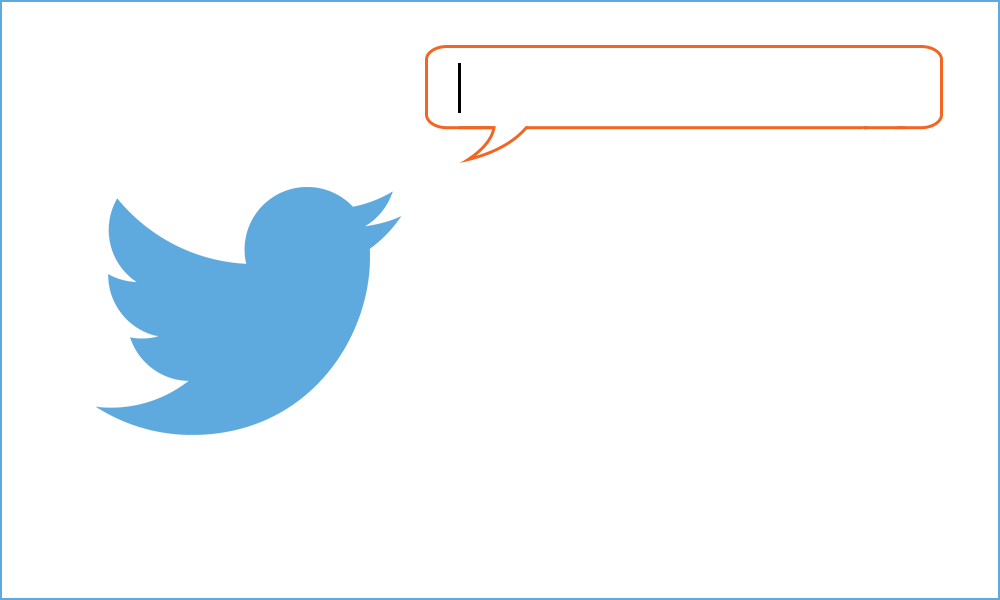When NPR education blogger Anya Kamenetz fired off a tweet this year complaining that while she seeks diverse sources on deadline, “only the white guys get back to me,” Twitter users responded quickly.
One person on Twitter said whoever was tweeting from her account was a “disgusting bigot.” Others said perhaps she had failed to build relationships with diverse sources.
She quickly acknowledged her mistake, and NPR’s supervising senior editor for standards and practices Mark Memmott sent a staff memo underscoring the difficulty for reporters to balance being objective and showing personality on social media.
“I wrote a memo about tweeting and retweeting so everyone was reminded yet again about the sensitivity and the need to be careful,” Memmott said. “They’re wonderful tools, but they need to be used properly.” (Kamenetz declined American Journalism Review’s request for comment)
The incident illustrates an ongoing conundrum: While newsrooms often require reporters to use Twitter to interact with readers, they continue to grapple with how extensively to train their staff on social media usage and how tightly to control it.
This fall, AJR contacted over a dozen news organizations, ranging from The Seattle Times to The Wall Street Journal, and found they pursue a range of strategies. Some provide specific guidelines on how reporters should use Twitter, typically with training sessions on how to implement them. Others give broad direction to their staffs and decline to specify what exactly should and should not be done on social media platforms.
Six of the 13 contacted had specific policies on staff Twitter usage and seven didn’t. Those that did not give reporters specific guidelines included BuzzFeed, Gawker, The Wall Street Journal and The Baltimore Sun.
Making Twitter Part of Larger Policies on Ethics
Some new organizations, including NPR, The News & Record in North Carolina and The Seattle Times , include social media guidelines in their ethics handbooks.
For example, NPR says in its handbook: “You should conduct yourself in social media forums with an eye to how your behavior or comments might appear if we were called up to defend them as a news organization.”
The Seattle Times tells its reporters to “talk to an editor/social media team” if they think they’ve offended someone with an insensitive tweet. The News & Record says “don’t say anything to a source, reader or acquaintance that would seem inappropriate if made in person, by email, face-to-face or when published in the News & Record, NewRecord.com or a competing publication”.
Jeff Gauger, editor and publisher of The News & Record, said he has never experienced a controversial Twitter situation with his reporters, which is mostly attributed to the specificity of their guidelines that “largely define the playing field upfront.”
Reporters encounter trouble when they think, “oh, it’s only Twitter,” said Bob Rose, deputy managing editor of the St. Louis Post-Dispatch. The problem is, many readers use Twitter as their main source of news, Rose said.
One reason social media can be especially tricky for journalists is that unlike written stories, most social media posts don’t require advance approval from an editor.
That’s why guidelines are so important, said Evan Bush, social media editor at The Seattle Times, because they help reporters understand how to “tweet out personal information that doesn’t harm your credibility, or compromise the paper’s credibility with readers.”
Guidance vs. Rules: Striking a Balance
Many newsrooms struggle to strike an appropriate balance between offering useful guidance for social media versus imposing rules that can inhibit reporters’ creativity.
In the early days of Twitter, Rose said news organizations wrote “volumes of social media policy,” but they soon discovered that when the policies are too narrow, they “become a fence that restricts what people can do.” Social media policies have since evolved to guide reporters how to use Twitter, as opposed to how they shouldn’t, he said.
Kelly Fincham, an assistant professor of journalism at Hofstra University who researches the intersection of social media and journalism practice, said she believes as social media continues to evolve, guidelines will place less emphasis on the platform itself – how a journalist should use each specific medium – and more on general policies in relation to social media.
For example, Fincham said some companies used to require employees to use two Twitter accounts – one personal and one public. This requirement has been dropped “because of a general acceptance that the public sees the journalist as one person and that nothing is truly private on the Internet.”
“The guidelines have changed because our understanding of social media has changed,” Fincham said. “Newsroom managers cannot control social media in the same way that they controlled legacy media and this has led to conflicts in this space.”
Even though companies find it difficult to adopt appropriate social media guidelines, Fincham said it’s important for them to do so because “social media is just too big to be folded under existing journalism ethics guidelines.”
Nick Timiraos, a national economics correspondent for The Wall Street Journal, said he believes that “overly burdensome” guidelines are not necessary, as long as reporters use the same judgment for tweets as for regular news stories.
“When I’m not sure if I should tweet something, I’ve found that it’s usually better to err on the side of not tweeting it,” Timiraos wrote in an email. “We want to engage with our audience, but we want to make sure that we’re adhering to the same standards of fairness and accuracy that we’d be expected to meet for stories published online or in print.”
Scott Kleinberg, the social media editor at The Chicago Tribune, said that his company’s policy is more general than specific, and he tells his reporters “don’t tweet stupid,” while Rubina Fillion, social media editor at The Wall Street Journal, said that she thinks Twitter policies should be “common sense.”
Gawker has offered similar advice to its reporters. Its former editorial director, Joel Johnson, explained the company’s Twitter policy this way: “Don’t be dumb,” according to an email to AJR in November.
That was shortly after Gawker writer Sam Biddle ignited advertiser backlash for a tweet joke about “GamerGate,” an online movement involving ethics in the gaming industry. Biddle’s tweet:
Ultimately #GamerGate is reaffirming what we’ve known to be true for decades: nerds should be constantly shamed and degraded into submission
— Sam Biddle (@samfbiddle) October 16, 2014
His subsequent tweet said: “Bring Back Bullying.”
Biddle apologized a day later, but the damage had been done. Advertisers did not see the nuances of Biddle’s humor. Publishing software Adobe was among those that pulled support from Gawker, tweeting that it “stands against bullying.”
@theLEOpirate We are not an advertiser w/ Gawker. We asked Gawker to remove our logo. Adobe stands against bullying. http://t.co/uj3HrHJqi3
— Adobe (@Adobe) October 21, 2014
After this incident, Johnson indicated that he too questioned whether more specific Twitter policies would benefit his writers.
“I don’t want to tell you what to tweet,” he wrote in a memo to Gawker staff. “But I do want you to think about how your tweets can be perceived without context. … I’ll be thinking about our need for an official policy about tweeting, including possibly determining that we still don’t need one.”
Other Ways to Encourage Good Social Media Behavior
Some editors said they use one-on-one meetings and public recognition of stellar social media activity to encourage good work among reporters on Twitter.
NPR uses its Social Media Desk Tumblr to show examples for other reporters, said Melody Kramer, a digital strategist and editor at NPR.
For example, on Nov. 17, the blog praised Carol Ritchie, producer and editor for NPR, for her use of Twitter in covering a sandstorm story. Ritchie made a spelling mistake in a tweet, then tweeted an apology, and also linked to a story about dyslexia, which she said “humanized” her mistake.
The Chicago Tribune uses one-on-one training to help reporters on social media.
Kleinberg said he meets individually with each member on staff so no one is embarrassed to ask questions, a “huge undertaking.”
“But I firmly believe that the reward justifies the investment,” he said. “I see too many places just turn their people loose and say … ‘have at it.’”








